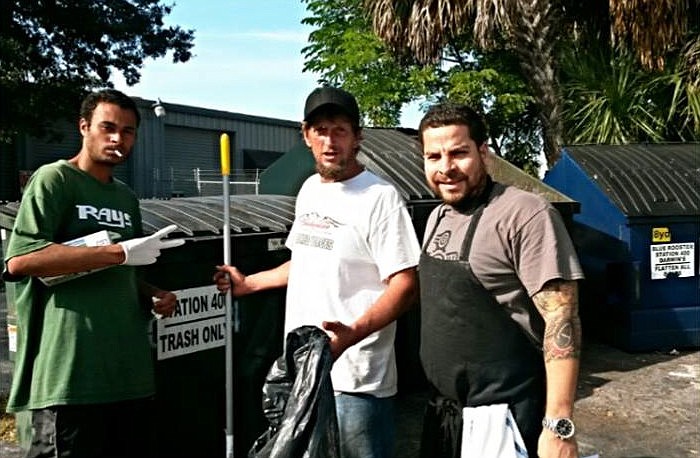- April 18, 2024
-
-
Loading

Loading

Although he’d taken note of a recent shift in the homeless population in the Rosemary District, Darwin Santa Maria didn’t fully process how things had changed until it was right in front of his eyes.
Santa Maria, the owner of Darwin’s on 4th, had a nearly tragic eye-opening experience this month: While driving, he narrowly avoided hitting a homeless individual sleeping in the road in front of his restaurant.
“What could have happened?” Santa Maria wonders now. “The next day, I was upset — I felt let down by the city. I didn’t know what to think.”
The city was made aware of a growing homeless population on Kumquat Court — right next to Darwin’s and the Blue Rooster — and other Rosemary streets in September. And still, Santa Maria said, problems persisted. The presence of homeless individuals in the Rosemary District, which houses the Salvation Army, wasn’t a new phenomenon. Some troubling behavior was new, however — more aggressive panhandling, increased harassment, more trash on the ground.
“This past six months it’s gotten to the point that it’s gotten out of hand,” Santa Maria said.
The day after his near-accident, Santa Maria came in to work angry. He began picking up items left on his property, preparing to throw them away, when he saw something that made him reconsider his approach.
“I saw the Bible, two books of the Bible, right in front of me, next to these pillows they sleep on,” Santa Maria said. “I thought, instead of me complaining, let’s take a different approach to this — let’s work with them.”
Since then, Santa Maria has enlisted homeless individuals near his restaurant to clean up his business and the streets surrounding it. For $10 per hour, they’re taking on tasks such as washing dishes and gathering garbage. It’s not going to fix everything, and Santa Maria has no idea whether what he’s doing is effective. Still, he’s determined to at least try to make a difference.
“I don’t know how to approach the situation,” Santa Maria said. “All I’m doing is trying to give them work every single day so they can do something and keep the street clean.”
Higher power
Although business owners made waves at the City Commission when they brought up the topic of the homeless population in Rosemary at a September meeting, Santa Maria said he’s seen no significant steps from the city.
“Nobody’s really paying attention to this problem,” Santa Maria said. “Everyone is complaining, and nobody is finding a solution to what we can do.”
Michael Bush, president of the Rosemary District Neighborhood Association, has recently reached out to city officials to try to change that. In an email to Vice Mayor Susan Chapman, Bush explained that businesses and residents in the area have been working with the homeless since 2003, and that people in the area have gone to great lengths to affect change on their end.
There are limits to their power, however, and Bush looked to city officials to take steps — such as potentially creating a temporary shelter or tent city to reduce the impact on Rosemary District streets.
“Why does Central (Avenue) have to be the unofficial ‘come as you are camp’ for the chronic homeless in Sarasota?” Bush wrote. “You are excessively burdening us.”
Although she disagreed with Bush’s assessment that the city was inactive toward Rosemary homeless issues, Chapman was glad to see a resident take an active interest in collaborating on solutions. She talked with Bush about some of the steps the city was taking following the failed talks to create a regional come-as-you-are shelter. Those steps include authorizing a second Homeless Outreach Team and examining successful “Housing First” models in other cities.
“What we have to do is refocus our efforts to things that provide more permanent solutions,” Chapman said. “Part of that is community education.”
Both Santa Maria and Bush — who responded positively to the response from Chapman and sought a follow-up meeting with the commissioner — are interested in taking an even more active role in addressing homelessness problems. Progress may be slower than those in the Rosemary District would like to see, but Chapman said that sort of response was necessary to substantively address those issues.
“Solutions to this issue have always been community solutions, not just governmental,” Chapman said.